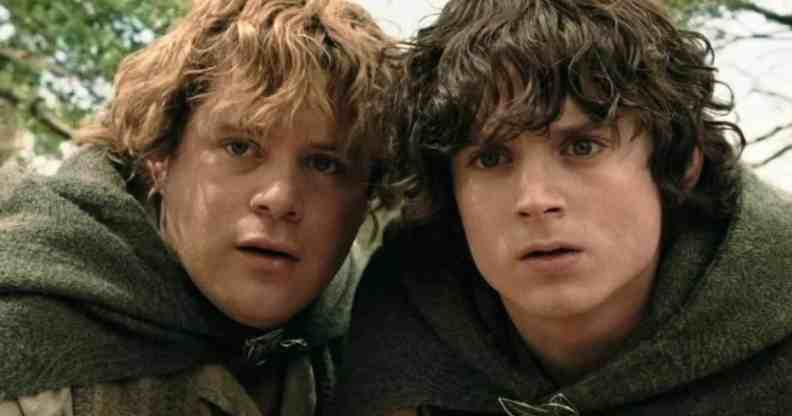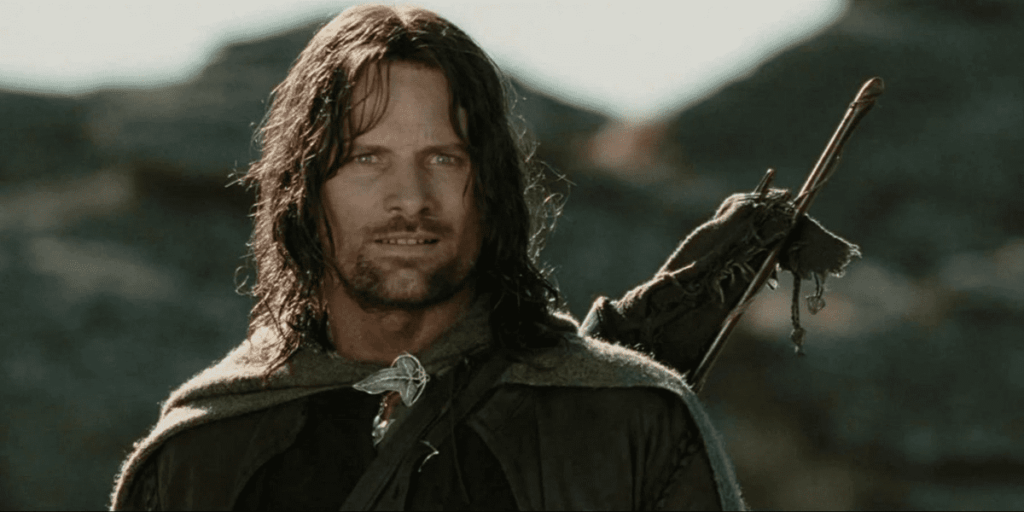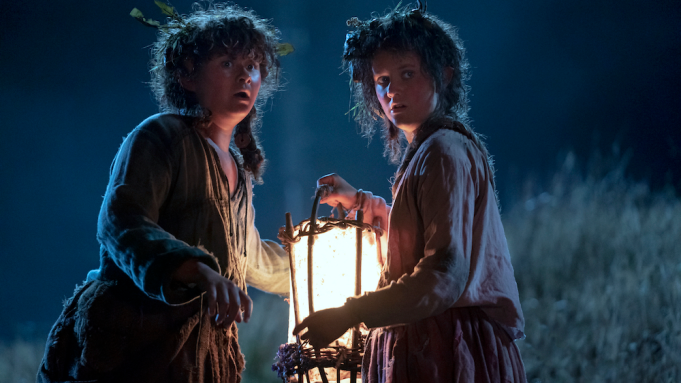Lord of the Rings: How Middle Earth became home for queer fans, from drag elves to Gandalf the ace

Sam and Frodo. (New Line Cinema)
The Lord of the Rings has inspired generations of queer folk, from The Hobbit through to the new Amazon Prime series, The Rings of Power.
The Lord of the Rings has a long and rich LGBTQ+ history, packed with allegories, queer-coded relationships and powerful women breaking down the gender binary.
The new series, The Rings of Power, based on Tolkien’s collection of mythopoeic stories The Silmarillion, takes place thousands of years before the well-known set of characters in Lord of the Rings and The Hobbit come on the scene.
With new characters, vast settings and expansive lore to play with, LGBTQ+ fans are waiting with bated breath to see if queer people will finally make an explicit appearance in Middle Earth.
For A, who first discovered the series when she was five, it has been a pivotal part of her life.
“This series is so precious to me because it’s about everyone finding their place and trying to help a valiant cause,” she said. “Middle Earth was somewhere I always wanted to go as I knew I’d be accepted.”

Aragorn played by Viggo Mortensen in the film trilogy. (New Line Cinema)
She’s is not the only one who has found a home in Tolkein’s world, with another fan, Beatrice, saying: “Returning to Middle Earth feels like coming home, especially when my own home wasn’t the most accepting place. That’s true of my household and my hometown.”
Many find queerness in imagined relationships between characters, picking up on subtext in the books and screen adaptation.
Many fans ‘ship’ Frodo Baggins and Samwise Gamgee, believing that they are destined for one another. But for Beatrice it was Merry and Pippin’s love for each other that touched them. “Merry’s heartbreak when Pip leaves and the joy when they reunite feels so overtly romantic to me,” they explained.
Others see queerness when they consider the characters’ inherent qualities.
Daniel has concluded that Gandalf “and probably the rest of the Istari are definitely asexual, and probably agender”, after long discussions with an asexual friend – a theory Ian McKellen agrees with.
“They’re mystical beings that have been put into flesh,” Daniel explains.
It was Aragorn, an ancient King of Arnor and Gondor, who A was most drawn to as a queer person. “He definitely strikes me as ace, perhaps demisexual,” she said, “but I think most characters could be seen as queer.”
Looking at the new Rings of Power series, Beatrice already sees the two hobbits, Poppy (Megan Richards) and Nori (Markella Kavenagh) as soulmates. “The beautiful thing about relationships in Middle Earth is that we’ll find that representation regardless of whether or not it’s intentional.”

Poppy (L) and Nori (R) in The Lord of the Rings: The Rings of Power. (Amazon Studios/Prime Video)
This queer subtext of The Lord of the Rings has given rise to a wealth of explicitly LGBTQ+ fan creations, from fanfiction to full-fledged productions.
Reece is one of the performers in You Shall Not Yass, a drag cabaret LOTR production.
Lord of the Rings drag at the RVT, titled YOU SHALL NOT YASS. Honestly, every time I think I couldn't love gay people more, pic.twitter.com/P6j0zIxqui— Erik Winther Paisley ?? (@ewpaisley) August 24, 2022
It’s the “brainchild of two wonderful and quite mad drag queens, Me and HERR”, Reece explains.
“More than 200 people crammed into the Royal Vauxhall Tavern and celebrated in all its camp, chaos, and majesty this enormous world and some of its most famous inhabitants.
Reece said that the idea of the Fellowship itself as a “chosen family” is incredibly queer and “something many LGBTQ+ fans can relate to”.
“As I’ve got older, I’ve totally fallen in love with that world, the characters, that whole mythos,” they add. “I think the themes resonate with me a lot more as I’ve matured and lived my own life.”
Although there is a lot of queer joy within the series and fandom, there can sometimes be toxicity.
“Previous spaces have been taken over largely by straight male voices, ruining the experience and the connection I’ve had with other fans,” says Joanna, who has read LOTR and The Hobbit once a year since she was 11.
Joanna points to racist backlash to the new Rings of Power series over its diverse cast.
“Far too many people were up in arms about many of the actors being cast purely because they aren’t white,” Joanna says. “I find this highly ironic and ridiculous as a huge part of Lord of the Rings was the bringing together of different races for the sake of good.”
For Joanna, the character that has resonated with them was Eowyn, a warrior who disguised themselves as a man.
“Eowyn is a total badass who was never happy within themself as a woman and sought to change their role and appearance to live the life they wanted, despite being told by everyone that this wasn’t possible,” she said.
"I thought I had strayed into a dream"
Arwen and (lesbian) Aragorn for Diverse Tolkein Week day one – women of color #dvtw21 pic.twitter.com/BdaosKlcL6— molly (inactive) (@hobbitgay) February 23, 2021
Looking forward to the new Rings of Power series, many LGBTQ+ fans have high hopes it will finally fulfill the franchise’s queer potential.
“Considering how people talk about the beauty of elves though, it would be neat to have some canon bisexuals,” said Beatrice, adding that a “non-binary hobbit would fit right in”.
Meanwhile Daniel said: “I can’t see how elves have a binary concept of gender. They literally live forever in the woods, and I think matters of what genitals each other have are quite beyond their concern.”
In recent weeks fantasy fans have seen the release of House of the Dragon, The Sandman and now Rings of Power, and for Reece this is the perfect time to platform queer stories.
“Audiences want their stories to reflect their own world,” they said, “I hope Rings Of Power can find space in its rich and expansive mythos for some queerness, and not just hiding behind the trees”.
As Joanna summed up: “Just the acceptance that we are here and our stories are just as valid as anyone else’s would be incredible.
“I mean, in a world where dragons live, trees walk and a tiny ring wields so much power, is it really so hard to believe that queer people also exist?”

